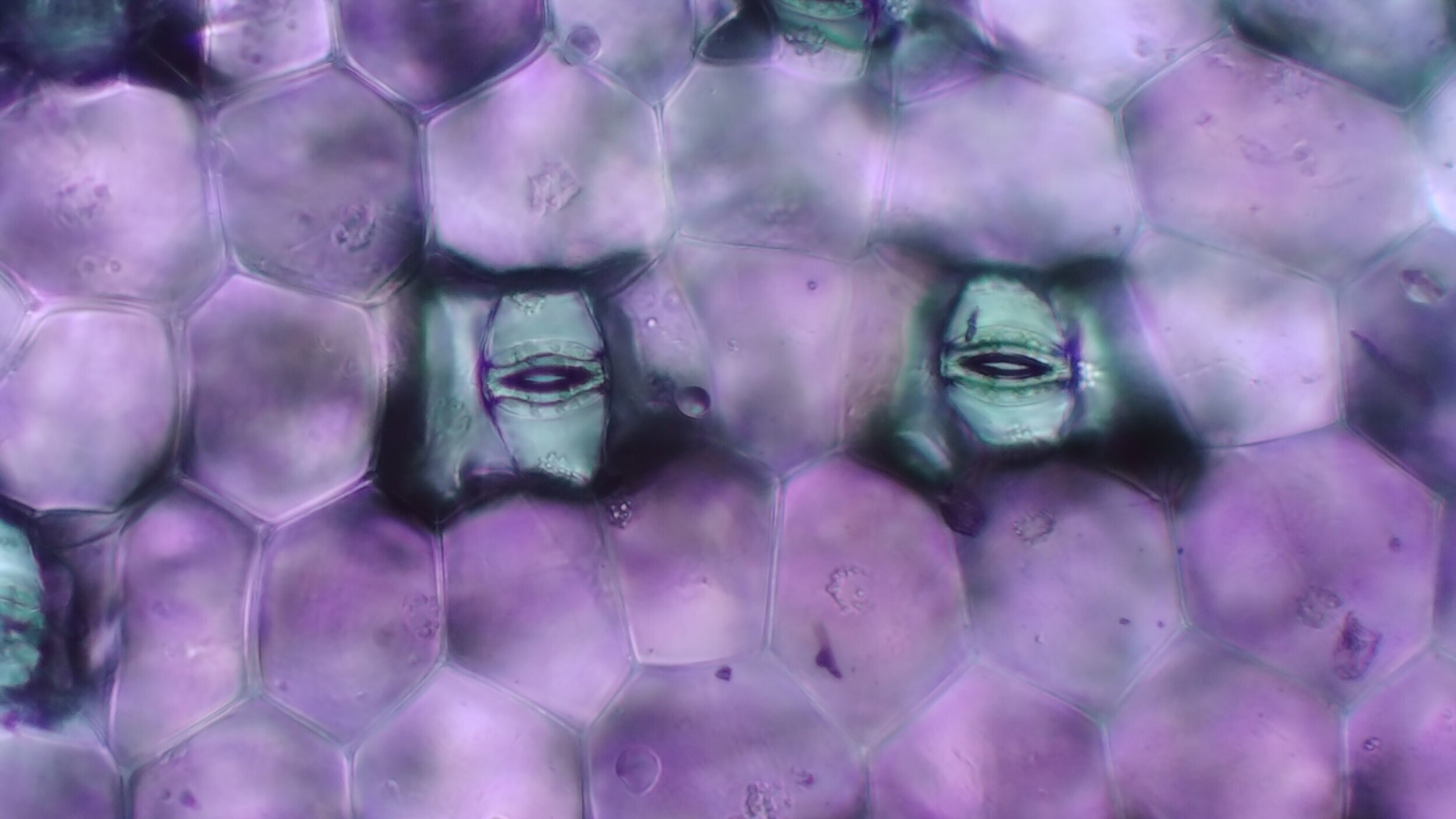Špela Petrič
Life in the terratope.
The journal Science recently published an article in which scientists describe the first meaningful exchange between a ficus tree and a human, which could, in a broader sense, be described as a conversation. The lucidly conceived experiment demanded exceptional patience and total dedication from both sides – during an 18-year experiment (2021-39) the ficus tree and the human had to negotiate a common semiotic code.
Similar to other plants, ficus trees (Ficus benjamina) monitor the amount of water they take up through their roots by opening and closing the stomata that are found on their leaves. Each leaf has thousands of 'tiny mouths' (stomata). The linguist and polyglot Mi Yu asked herself whether she could read stomata in a similar way as the deaf can read lips and thus establish a basic sign set of communication signs with the young ficus.
By implementing Pavlov conditioning, Mi Yu could teach the ficus basic signs for 'more', 'less' and 'stop' over a course of four years. The ficus would open its mouths and she would respond with a code of light. If the plant threw off all the leaves as a result of a quick change, as ficus trees often do, the new leaves remembered the agreed upon signs. Over the next ten years they perfected the code light and lips to the extent where the first scientifically recorded conversation between a plant and a human took place.
“Institute for Inconspicuous Languages: Reading Lips” is an attempt to repeat this experiment.
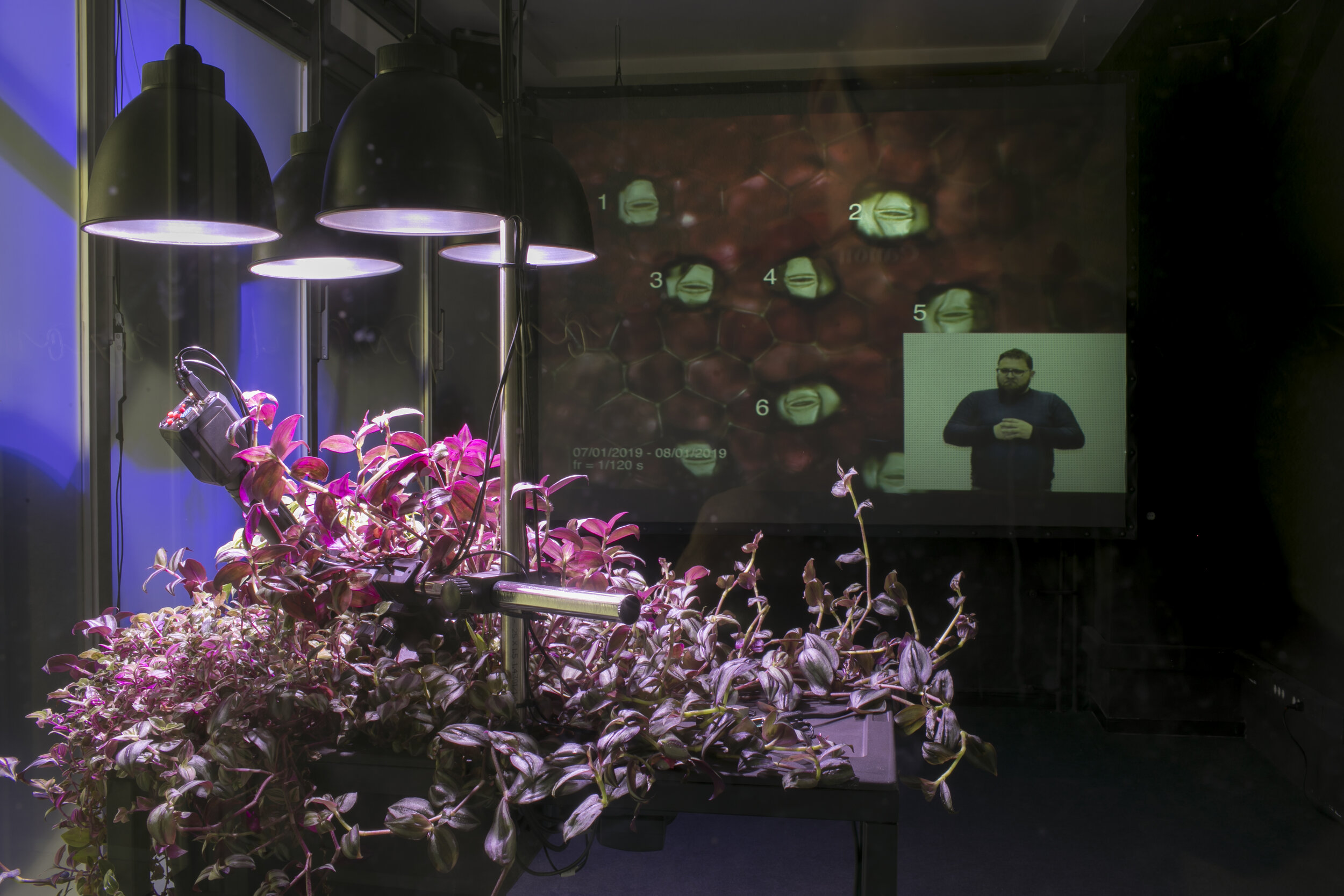
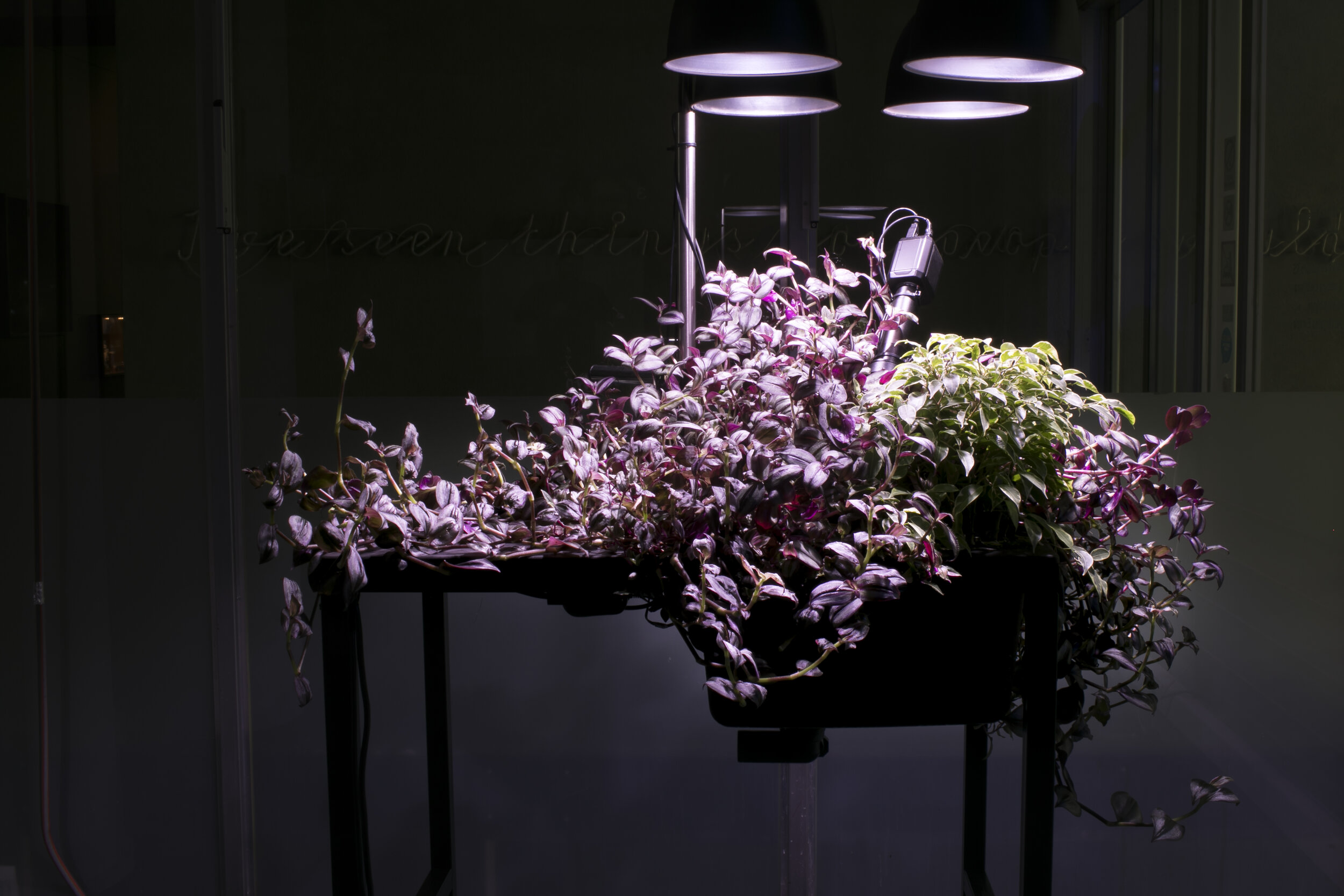
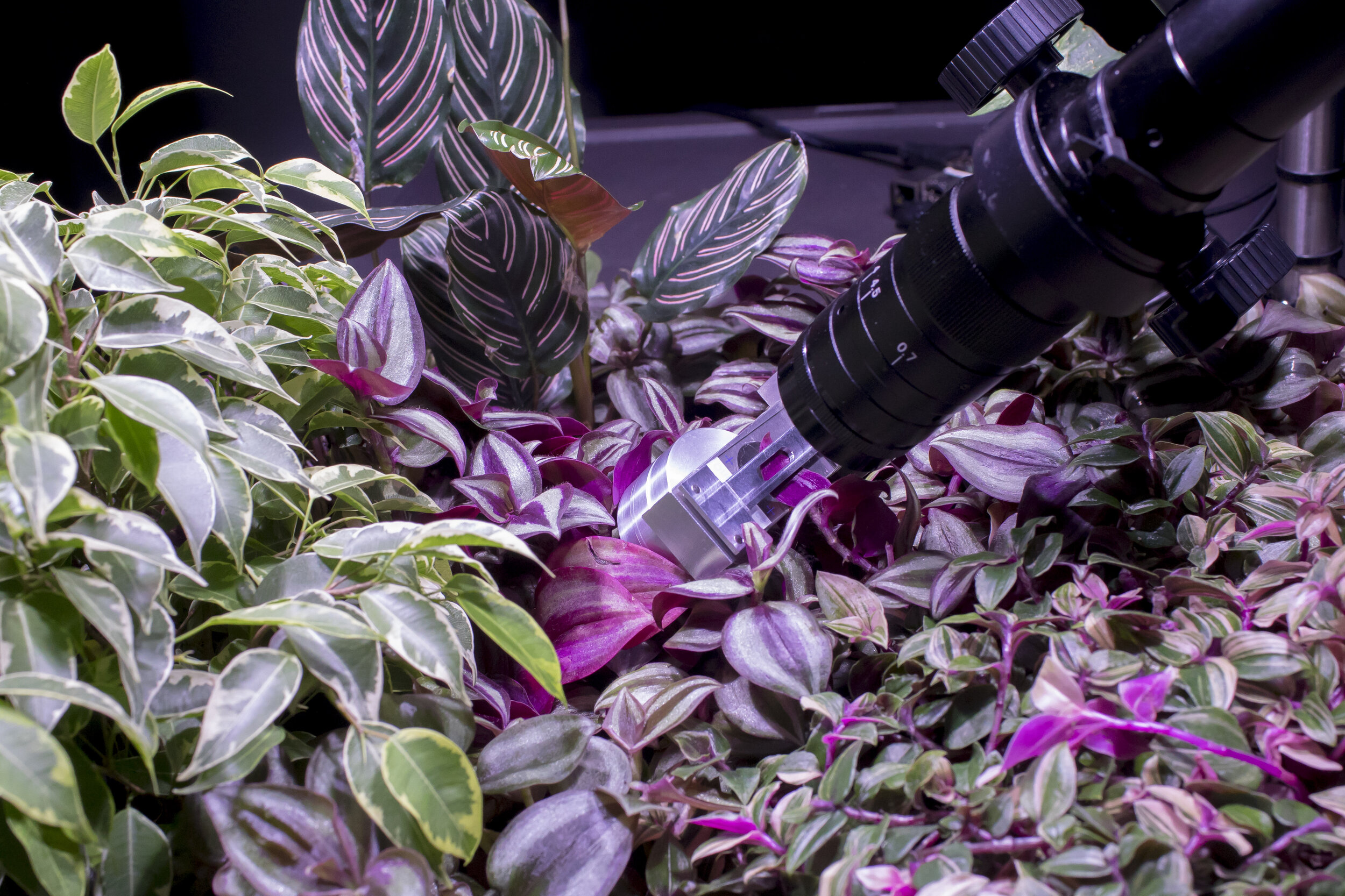
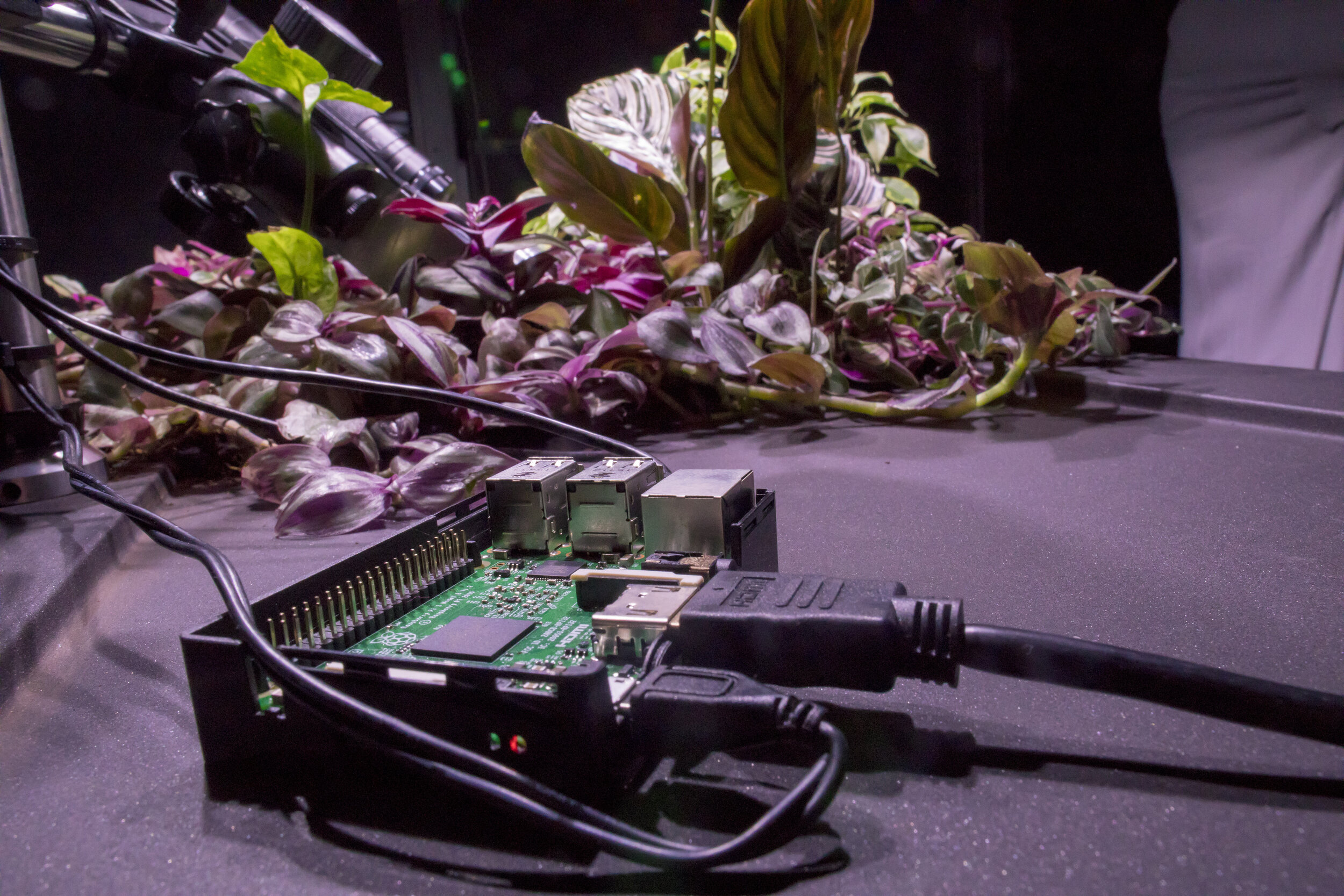
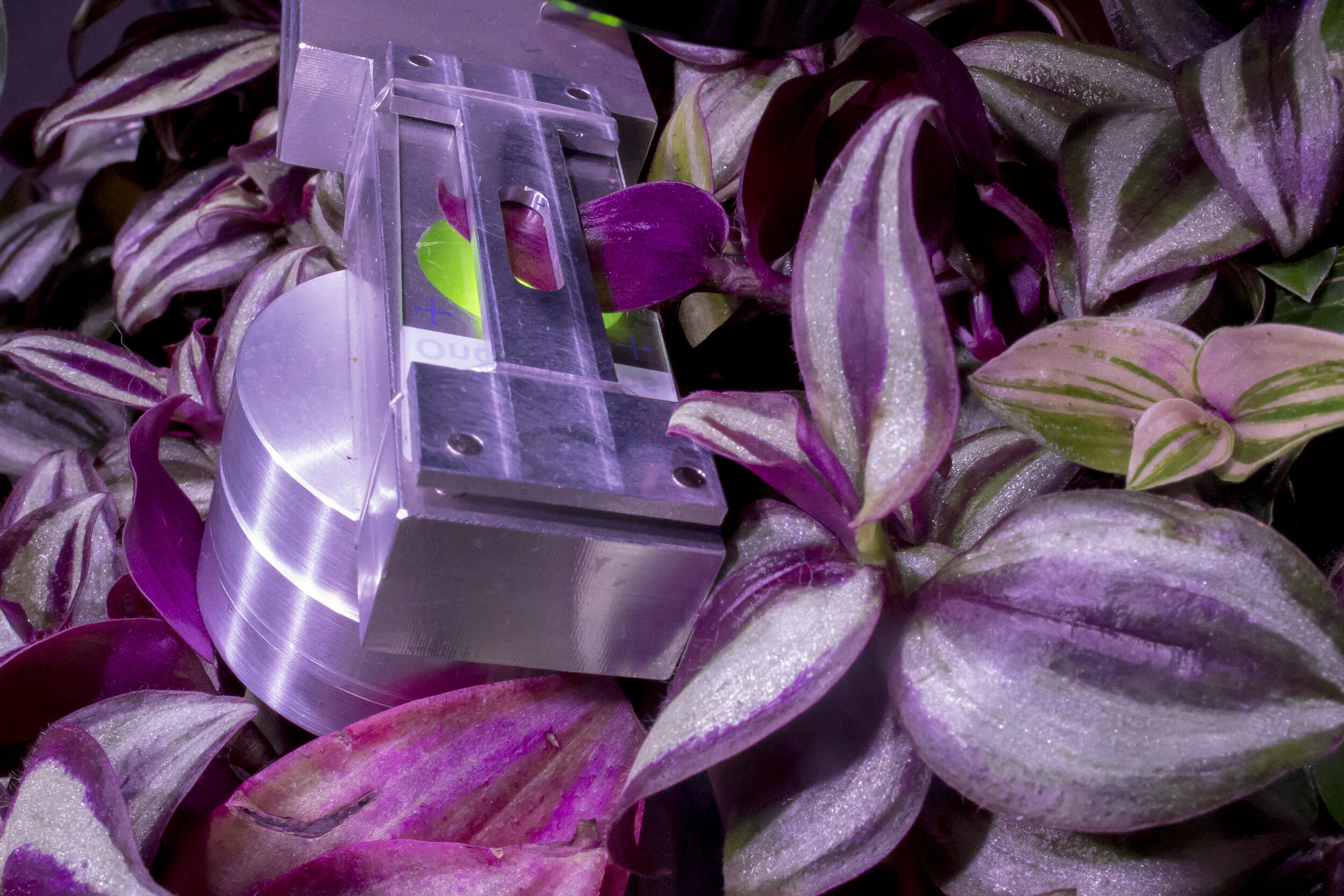
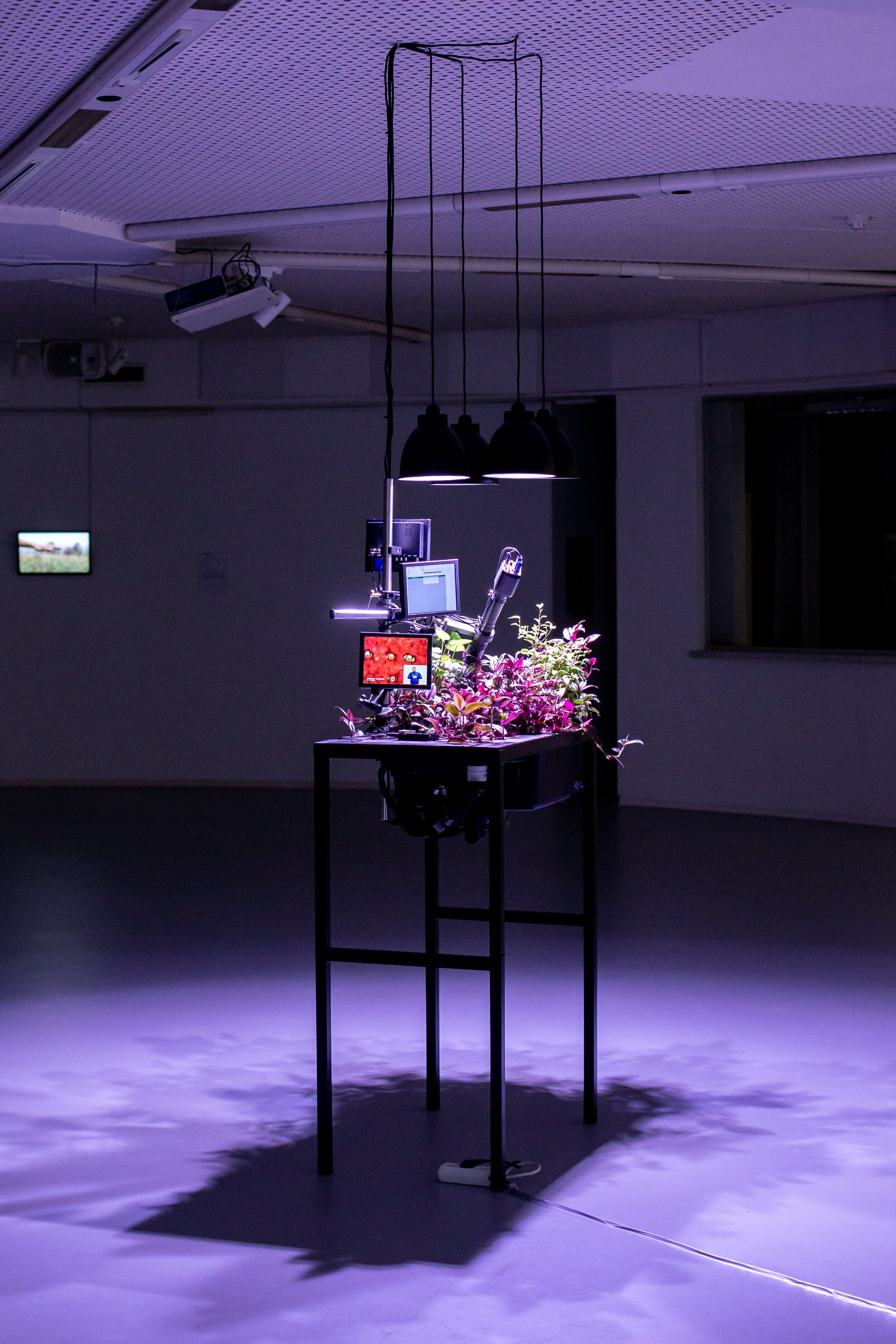
2018| Author: Špela Petrič |Programming and sensor integration: Bart Peeters | Programming of the computer vision: Klara Nosan, Tim Oblak | Expert advice: Luka Šajn, Žiga Emeršič, Miha Turšič | Technical execution: Scenart| Special thanks: Faculty of Computer and Information Science at the University of Ljubljana and Waag, NL | The project is a part of 'European ARTificial Intelligence Lab'. Co-funded by: Creative Europe programme of the European Union, Ministry of Culture of the Republic of Slovenia and Department of Culture of the Municipality of Ljubljana.
Produced by Kapelica Gallery/Kersnikova Institute
